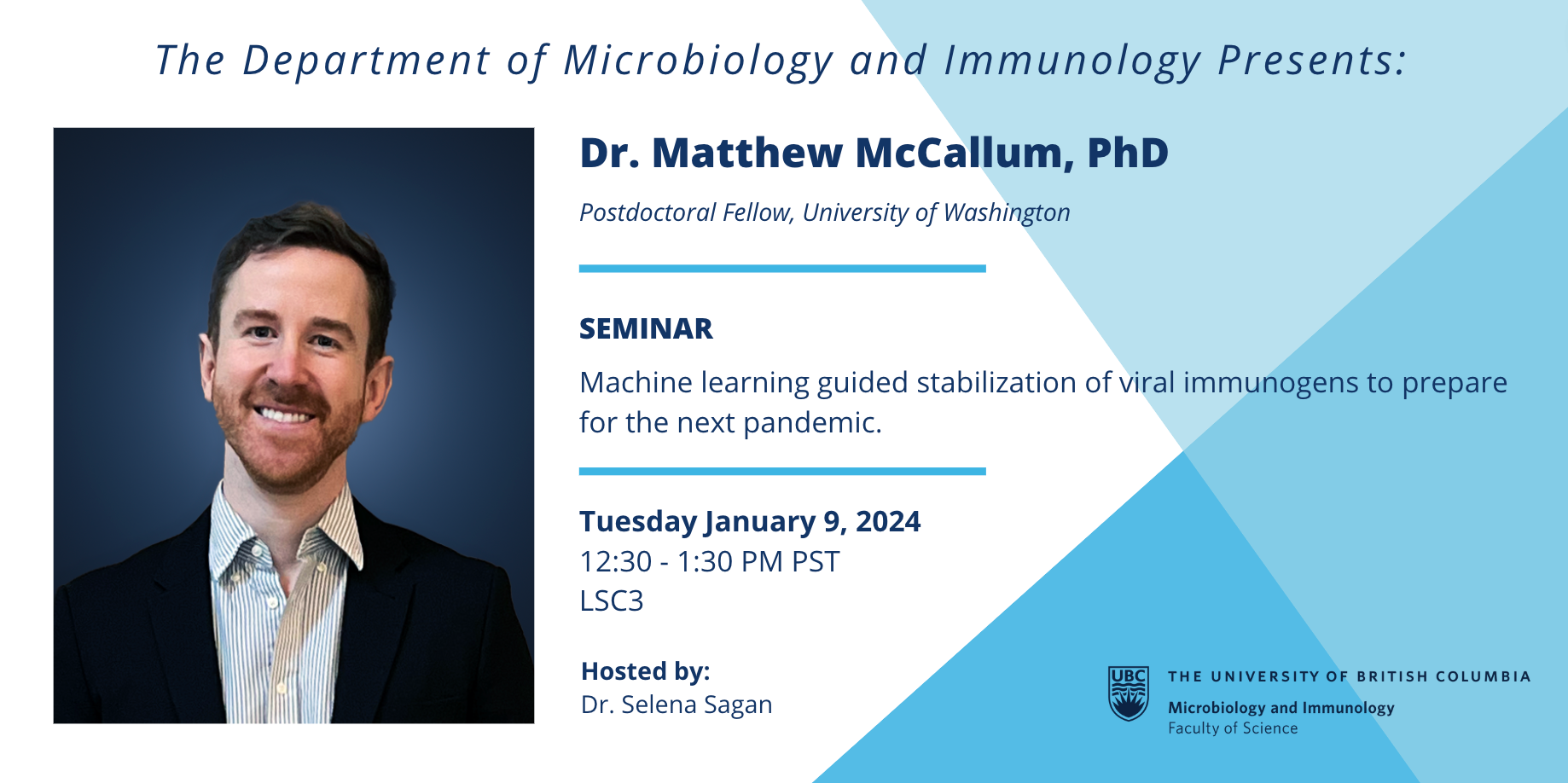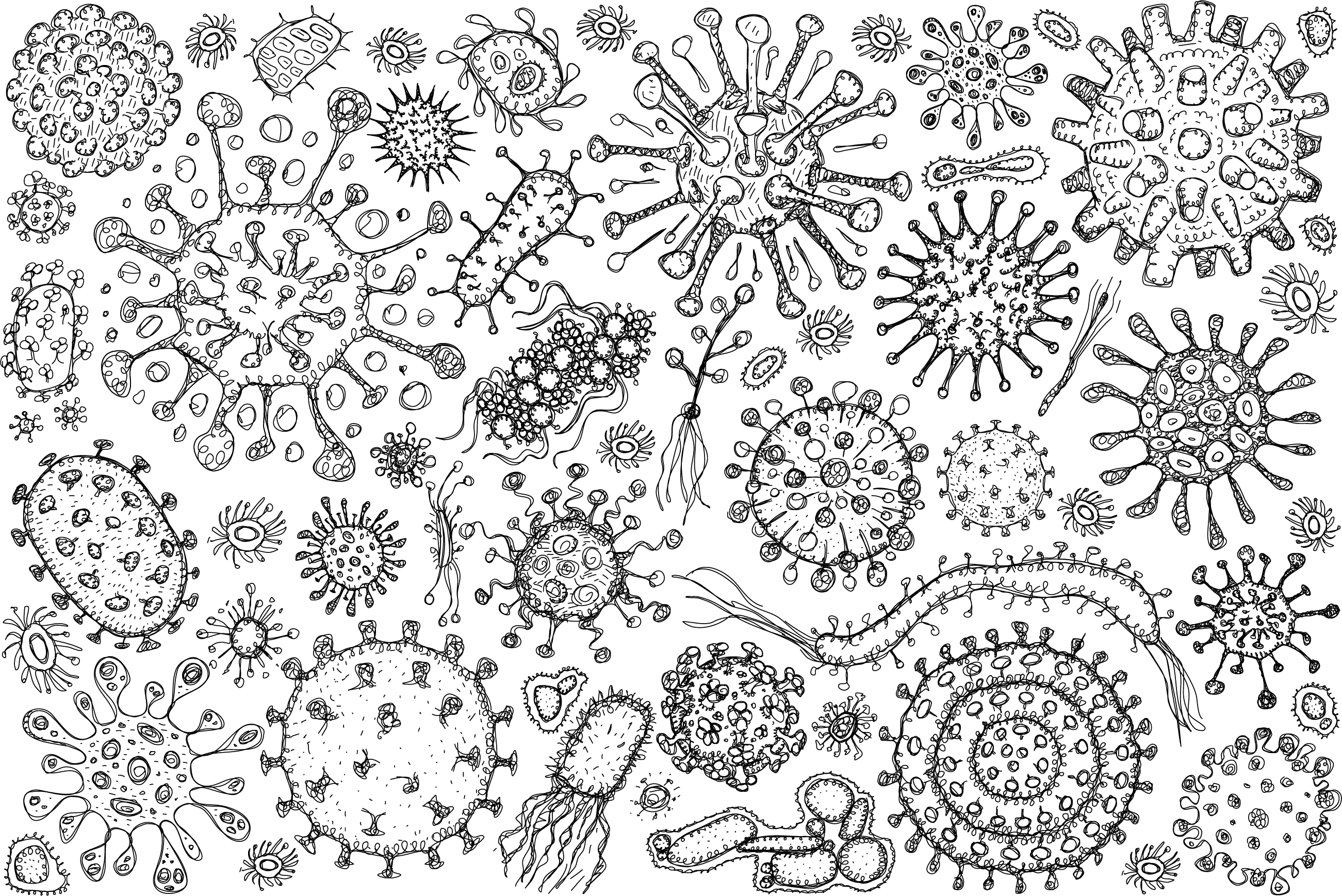
Seminar Title: Machine learning guided stabilization of viral immunogens to prepare for the next pandemic
Speaker Bio: After obtaining his PhD in Biochemistry at the University of Toronto studying the bacterial type IV pilus, Matthew joined the University of Washington in 2020 as a postdoctoral fellow. There, he established the presence of the antigenic supersite in the N-terminal domain of the SARS-CoV-2 spike protein, as well as the fascinating ways this virus mutates to escape our neutralizing antibodies, informing clinicians and vaccine manufacturers. He also used machine-learning guided protein design to stabilize and permit expression of the key immunogen from Langya virus, a potential pandemic pathogen, for structural and immunogenic characterization.
His goal is to use student-centered teaching techniques to empower the next generation of diverse scientists to prevent pandemics with science. An essential component of viral vaccine development for pandemic preparedness is identifying generalizable strategies that can stabilize viral entry proteins for use as immunogens. To do this, his lab will synergise protein design and cryoEM structure determination with biophysical and cell-culture based assays, focusing on viruses that already cause disease in humans – if those viruses have entry proteins that represent critical vaccination knowledge gaps. It is clear from preliminary work on Herpesviridae entry proteins that this approach will be ground-breaking for the field.
LSC 3 (Life Sciences Institute - 2350 Health Sciences Mall) MBIM itsupport@microbiology.ubc.ca America/Vancouver publicSeminar Title: Machine learning guided stabilization of viral immunogens to prepare for the next pandemic
Speaker Bio: After obtaining his PhD in Biochemistry at the University of Toronto studying the bacterial type IV pilus, Matthew joined the University of Washington in 2020 as a postdoctoral fellow. There, he established the presence of the antigenic supersite in the N-terminal domain of the SARS-CoV-2 spike protein, as well as the fascinating ways this virus mutates to escape our neutralizing antibodies, informing clinicians and vaccine manufacturers. He also used machine-learning guided protein design to stabilize and permit expression of the key immunogen from Langya virus, a potential pandemic pathogen, for structural and immunogenic characterization.
His goal is to use student-centered teaching techniques to empower the next generation of diverse scientists to prevent pandemics with science. An essential component of viral vaccine development for pandemic preparedness is identifying generalizable strategies that can stabilize viral entry proteins for use as immunogens. To do this, his lab will synergise protein design and cryoEM structure determination with biophysical and cell-culture based assays, focusing on viruses that already cause disease in humans – if those viruses have entry proteins that represent critical vaccination knowledge gaps. It is clear from preliminary work on Herpesviridae entry proteins that this approach will be ground-breaking for the field.

